Track construction plays a crucial role in creating high-quality sports surfaces that meet the demands of athletes and provide a safe and durable environment for sports events. In the context of Fox Sports Surfaces, a reputable provider of sports surface solutions, understanding the process of track construction and the benefits it offers is essential.
Before diving into the benefits of Fox Sports Surfaces, it is important to understand the concept of track construction. This involves the creation of sports surfaces designed for various sports, including athletics, running, and other field events. Different types of sports surfaces are utilized based on the specific requirements of the sport, such as track and field, football, hockey, or tennis.
The construction of sports tracks using Fox Sports Surfaces offers several benefits for athletes and sports facilities alike. Some of these benefits include enhanced performance, safety, durability, and longevity.
- Enhanced Performance: Fox Sports Surfaces deliver a high-performance track that allows athletes to achieve their best results. The advanced technology and materials used in their surface construction offer optimal traction, shock absorption, and energy return, enabling athletes to perform at their peak.
- Safety and Injury Prevention: Fox Sports Surfaces prioritize athlete safety by incorporating safety features and materials that minimize the risk of injuries. The track design, cushioning, and uniformity help reduce impact forces on joints and muscles, providing a safer environment for athletes.
- Durability and Longevity: Fox Sports Surfaces are known for their exceptional durability, ensuring that the track remains in prime condition even after years of heavy usage. The specialized materials used in their construction are resistant to wear and tear, making them a long-term investment for sports facilities.
Understanding the steps involved in track construction is vital to ensure a successful project. These steps typically include site evaluation and preparation, drainage system installation, base construction and compaction, layering and surfacing, and line marking and finishing touches.
Factors such as climate and weather conditions, intended use and sports requirements, and maintenance and upkeep must be considered during the track construction process. These factors play a significant role in determining the type of surface and construction techniques that will best suit the specific environment and usage demands.
Despite the meticulous construction process, issues can arise with sports surfaces. Common problems include cracks and damage, drainage problems, and uneven surfaces or bumps. Troubleshooting and addressing these issues promptly is crucial to maintain the integrity and functionality of the track.
To ensure the longevity and optimal performance of Fox Sports Surfaces, routine maintenance and care are essential. This includes regular cleaning, inspections, and repairs as needed. Adhering to a comprehensive maintenance plan will help extend the lifespan of the track and preserve its performance characteristics.
By understanding the principles and processes involved in track construction, as well as the benefits and maintenance requirements of Fox Sports Surfaces, sports facilities can create superior sports tracks that meet the highest standards of performance, safety, and durability.
– Fox Sports Surfaces offer enhanced performance for athletes, ensuring optimal playing conditions and improved game outcomes.
– These surfaces prioritize safety and injury prevention, reducing the risk of accidents and providing a secure environment for players.
– With a focus on durability and longevity, Fox Sports Surfaces are built to withstand heavy use and maintain their quality over time.
– In track construction, site evaluation and preparation, drainage system installation, and base construction and compaction are crucial steps.
– Layering and surfacing, along with line marking and finishing touches, complete the process of track construction.
– Climate and weather conditions, intended use and sports requirements, and maintenance and upkeep are important factors to consider in track construction.
– Common issues such as cracks and damage, drainage problems, and uneven surfaces or bumps require troubleshooting measures.
– Maintenance and care are essential for Fox Sports Surfaces’ longevity. Regular inspections, cleaning, and repair ensure optimal performance and safety for athletes.
What is Track Construction?
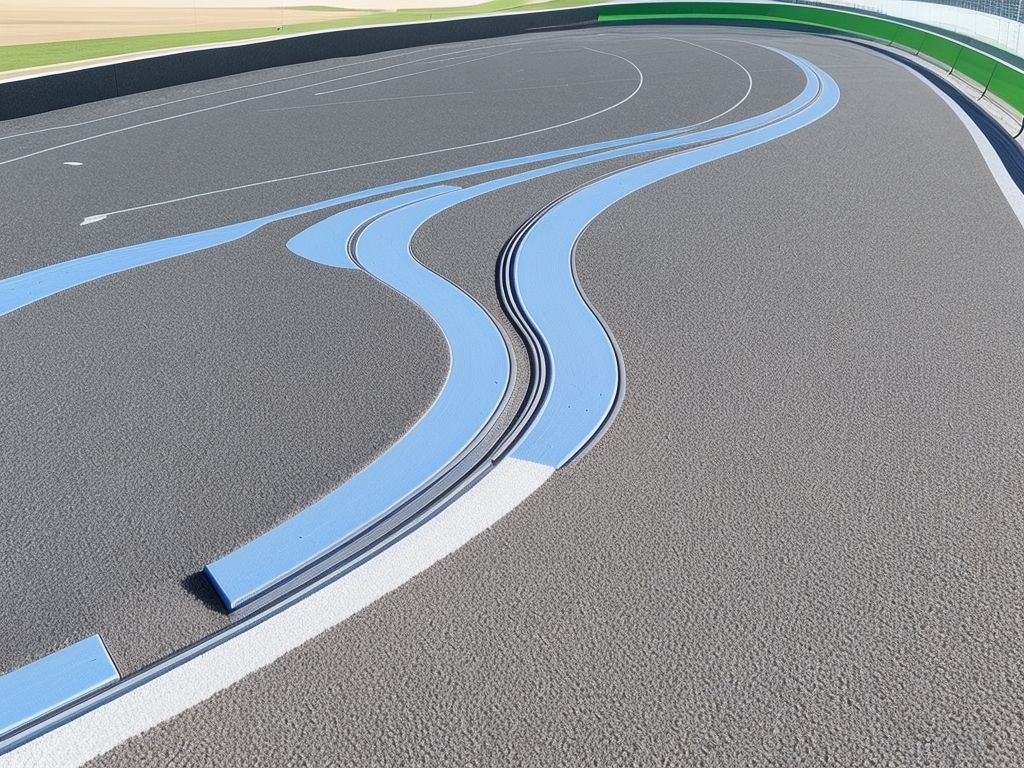
Photo Credits: Runningtrackresurfacing.Uk by Kevin Lopez
Track construction involves the building and preparation of tracks for various sporting events, both indoors and outdoors. These tracks are used for activities such as athletics, running, cycling, and racing. The process of track construction includes several important elements that ensure the safety, performance, and longevity of the track.
1. Surface preparation: Before the construction begins, the site is surveyed and levelled. Any existing obstacles or debris are cleared, and drainage systems are installed to prevent water accumulation on the track.
2. Base construction: The stability and durability of the track depend on a solid base. This typically involves the placement of multiple layers of aggregates, such as crushed stone and gravel, which are compacted to create a firm foundation.
3. Surface material: The choice of surface material for the track depends on factors such as the sport being played and the level of competition. Common materials include rubberised tracks, polyurethane surfaces, and synthetic turf.
4. Line markings and accessories: Once the surface is in place, line markings for track lanes, starting positions, and event-specific areas are added. Accessories like hurdles, starting blocks, and field event equipment are also installed.
5. Maintenance: Proper maintenance is crucial for the track’s longevity and performance. Regular inspections, repairs, and cleaning ensure that the track remains safe and in optimal condition for athletes.
Fact: Professional track and field events follow standardised dimensions for outdoor tracks. The track should measure 400 metres in length, with eight lanes. Each lane should be 1.22 metres wide, and the turns should have a minimum radius of 36.5 metres. Indoor tracks may have different dimensions, typically shorter in length and with fewer lanes.
What are the Different Types of Sports Surfaces?
What are the Different Types of Sports Surfaces?
- Turf: Also known as artificial grass or synthetic turf, this type of sports surface is made up of synthetic fibres that are designed to resemble natural grass. It offers consistent performance and requires minimal maintenance.
- Grass: Natural grass is a popular choice for sports surfaces due to its natural feel and aesthetics. It provides good traction and is suitable for various sports such as football, cricket, and rugby. It requires regular maintenance and may be affected by weather conditions.
- Concrete: Concrete is a durable sports surface that offers excellent stability. It is commonly used for sports like basketball, tennis, and roller skating. It requires less maintenance compared to grass or turf surfaces.
- Clay: Clay surfaces are commonly used for tennis courts. They provide good traction and are suitable for players who prefer a slower game. Clay surfaces require regular watering and grooming to maintain their quality.
- Asphalt: Asphalt surfaces are commonly used for running tracks. They offer good shock absorption and are suitable for sprinting and other track and field events. Asphalt surfaces can withstand heavy use and require minimal maintenance.
- Rubber: Rubber surfaces are often used for indoor sports facilities such as basketball courts and gyms. They provide excellent shock absorption and are ideal for high-impact sports. Rubber surfaces are durable and easy to maintain.
- Gravel: Gravel surfaces, also known as cinder tracks, are common in horse racing and athletics. They provide good drainage and a firm surface for running. Gravel surfaces require regular maintenance to prevent erosion and unevenness.
The concept of different types of sports surfaces has evolved over the years as new materials and technologies have been developed. In the past, natural grass was the primary choice for sports surfaces, but the demand for more durable, low-maintenance options led to the development of artificial turf and other synthetic surfaces. Today, there is a wide range of sports surfaces available, each with its own advantages and considerations. The choice of sports surface depends on factors such as the sport being played, the desired performance characteristics, and the budget and maintenance capabilities of the facility. By understanding the different types of sports surfaces and their specific properties, decision-makers can select the most suitable surface for their specific needs.
Benefits of Fox Sports Surfaces
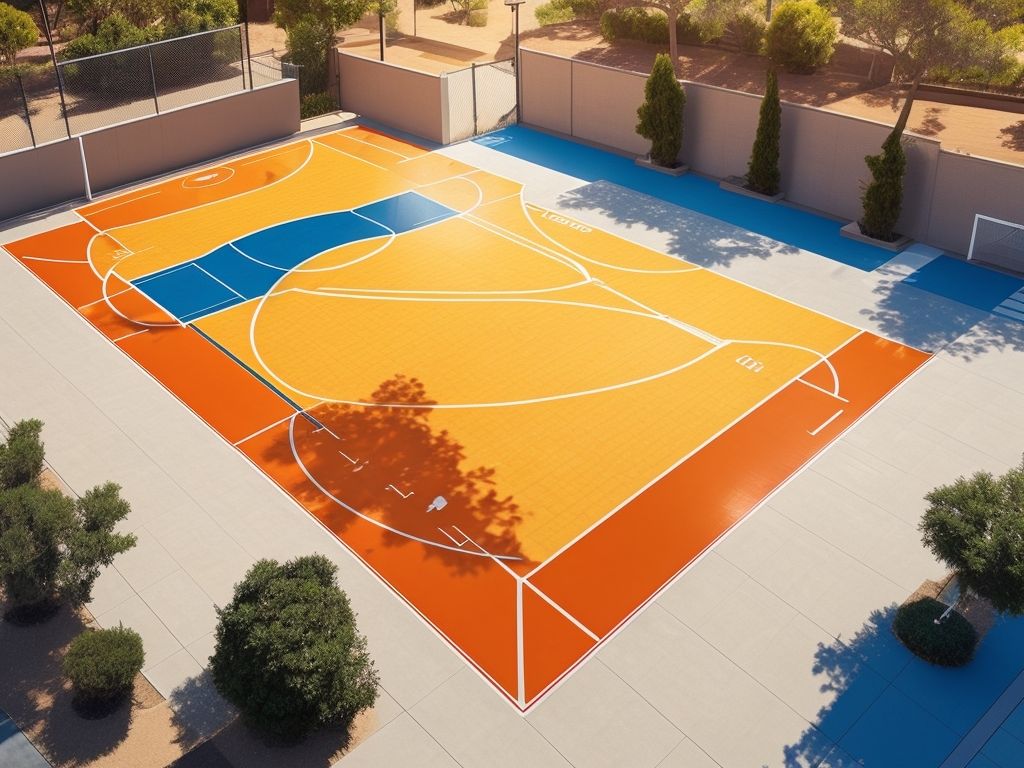
Photo Credits: Runningtrackresurfacing.Uk by Joe Torres
Fox Sports Surfaces are revolutionising the game with a multitude of benefits. These surfaces are raising the bar in sports by enhancing performance, ensuring safety and injury prevention, and providing durability and longevity. By unleashing the power of cutting-edge materials and technology, Fox Sports Surfaces ensure that athletes reach their peak performance, minimise the risk of injuries, and provide surfaces that can withstand the test of time. Get ready to explore how these surfaces are changing the game in incredible ways.
1. Enhanced Performance
Enhanced performance is a vital aspect of track construction, and Fox Sports Surfaces provides the following benefits:
- 1. High-Quality Materials: Fox Sports Surfaces uses top-notch materials specifically designed to enhance performance. These materials ensure optimal traction and grip, allowing athletes to perform at their best.
- 2. Advanced Technology: Fox Sports Surfaces incorporates cutting-edge technology in their track construction, resulting in surfaces that offer excellent shock absorption. This helps reduce the impact on athletes’ joints and muscles, minimizing the risk of injuries.
- 3. Consistent Surface: The track’s surface plays a significant role in an athlete’s performance. Fox Sports Surfaces ensures a level and uniform surface, providing athletes with a consistent and predictable running experience. This allows them to focus on their technique and achieve better results.
- 4. Proper Rebound: The track’s rebound characteristics are essential for performance in events such as sprinting and jumping. Fox Sports Surfaces constructs tracks with the right amount of rebound, giving athletes the necessary propulsion and energy return for optimal performance.
- 5. Excellent Drainage: A well-drained track is crucial for maintaining performance levels in various weather conditions. Fox Sports Surfaces installs an efficient drainage system to prevent water accumulation, ensuring the track remains dry and safe, allowing athletes to perform at their best.
When considering track construction, it is essential to prioritize factors that enhance performance. By choosing Fox Sports Surfaces, athletes can have confidence in their ability to push their limits and achieve their goals.
2. Safety and Injury Prevention
Ensuring safety and injury prevention is a crucial aspect of track construction. Here are some measures to consider:
- Proper Surface Material: Select a track surface material that provides adequate grip and cushioning to minimise the risk of slips and falls. The Fox Sports Surfaces offer excellent shock absorption and grip, reducing the chances of injuries.
- Shock Absorption: A track surface with good shock absorption properties helps reduce the impact on athletes’ joints and muscles. Fox Sports Surfaces are designed to absorb impact, protecting athletes from injuries such as sprains or strains.
- Even Surface: A smooth and even track surface is essential for injury prevention. Irregularities or bumps can cause athletes to trip or lose balance. Fox Sports Surfaces are carefully constructed to ensure a level and uniform track that minimises the risk of falls.
- Proper Drainage: Adequate drainage is necessary to prevent water from accumulating on the track. Standing water can lead to slippery conditions and increase the risk of injuries. With the drainage system installed during track construction, Fox Sports Surfaces offer excellent water dispersal.
- Line Markings: Clear and visible line markings are essential to guide athletes during races or training. Faded or unclear markings can result in collisions or incorrect foot placements. Fox Sports Surfaces pay attention to precise line marking to ensure safety for athletes.
- Regular Maintenance: Proper cleaning, maintenance, and routine inspections are essential for ensuring the continued safety of the track. Fox Sports Surfaces offer durability and longevity, but regular upkeep is still necessary to maintain optimal safety standards.
By considering these safety and injury prevention measures during track construction, athletes can have a secure and reliable surface to perform their best, minimising the risk of accidents and injuries.
3. Durability and Longevity
Durability and Longevity are important considerations in track construction. Here are some key points to keep in mind:
- Quality materials: It is crucial to use high-quality materials to ensure the durability and longevity of the track. This includes selecting the right type of surface material, such as polyurethane or rubber, that can withstand constant use and weather conditions.
- Proper installation: The track should be installed by experienced professionals who follow industry-specific guidelines and standards. This ensures that the track is laid out correctly and that all components are securely in place, minimizing the risk of premature wear and tear.
- Regular maintenance: Regular maintenance is essential for preserving the durability and longevity of the track. This includes routine cleaning, inspecting for any signs of damage or deterioration, and addressing any maintenance issues promptly.
- Protective measures: Implementing protective measures, such as adding a topcoat or sealant, can help enhance the durability and longevity of the track. These protective measures provide an extra layer of defense against factors like UV radiation and moisture.
Fact: A well-maintained track can have a lifespan of up to 20 years or more, depending on the usage and environmental conditions. By investing in a durable and long-lasting track, sports facilities can minimize the need for frequent repairs or replacements, saving both time and resources in the long run.
Steps in Track Construction
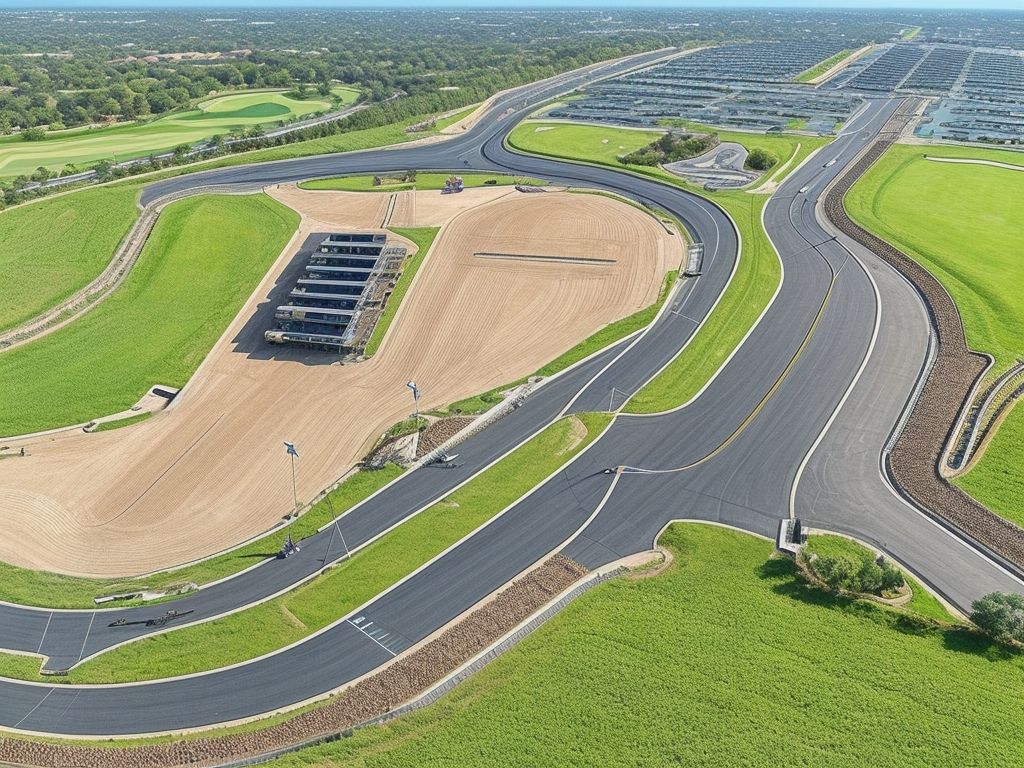
Photo Credits: Runningtrackresurfacing.Uk by Adam Martinez
When it comes to constructing top-notch tracks for Fox Sports, a series of precise steps are followed. The process begins with evaluating and preparing the site, followed by installing a solid drainage system, constructing a sturdy base, and applying the perfect layers and surfacing. Every aspect is carefully considered in order to create exceptional sports surfaces. The final steps include line marking and finishing, adding the essential touches to complete the process. Join us as we unravel the intricacies of track construction and discover the secrets behind creating exceptional sports surfaces.
1. Site Evaluation and Preparation
The site evaluation and preparation phase is a crucial step in track construction. It sets the foundation for a successful project by determining the feasibility and readiness of the site. Here are the steps involved in site evaluation and preparation:
- Inspect the site: Assess the condition of the site where the track will be built. Look for any natural or man-made obstacles, such as trees, rocks, or utility lines, that may need to be removed or relocated.
- Survey the area: Conduct a topographic survey to gather accurate data about the site’s elevation, slope, and drainage patterns. This information will help in designing the track layout and determining the required grading and drainage measures.
- Determine the soil quality: Test the soil quality to ensure it is suitable for constructing a track. The soil should have proper compaction, stability, and drainage properties. If needed, soil amendments or stabilization measures may be required.
- Consider environmental factors: Evaluate the impact of environmental factors on the track’s performance and longevity. Factors such as wind exposure, sun exposure, and nearby vegetation can affect the track’s durability and maintenance requirements. Mitigation measures like windbreaks or shade structures may be necessary.
- Assess accessibility and utilities: Evaluate the accessibility of the site for construction equipment and materials. Ensure that there is convenient access to utilities such as water, electricity, and drainage systems.
Pro-tip: It is important to involve an experienced civil engineer or track specialist during the site evaluation and preparation phase. Their expertise will ensure that all necessary factors are considered, and any potential issues are addressed early on. Remember, thorough site evaluation and preparation will lead to a well-designed and durable track.
2. Drainage System Installation
- Excavate the area: Start by excavating the area where the track will be installed. This involves removing the top layer of soil or existing surface to create a level and uniform base.
- Create a slope: Next, establish a slight slope on the track to ensure proper drainage. This slope allows water to flow away from the track surface, preventing pooling and water damage.
- Install drains: Once the slope is established, the drainage system can be installed. This typically involves placing perforated pipes or channels along the edges of the track to collect and channel water away from the surface.
- Connect the drains: Connect the drains to an appropriate outlet, such as a drainage ditch or underground drainage system. Ensure that the water has a clear and direct path to flow away from the track.
- Backfill and compact: After the drains are in place, backfill the area around them with a suitable material, such as gravel or sand. Compact the backfill material to ensure stability and proper functioning of the drainage system.
- Test the drainage system: Once the installation is complete, test the drainage system by pouring water onto the track surface. Observe the flow of water and ensure it is efficiently directed towards the drains without any backflow or pooling.
Proper drainage system installation is essential in track construction to prevent water damage, maintain the track’s integrity, and provide a safe and functional surface for athletes.
3. Base Construction and Compaction
When it comes to base construction and compaction in track construction, there are several important steps to follow:
- Prepare the site: Before starting the base construction, evaluate the site to ensure it is suitable for track installation. Clear any debris or vegetation and make sure the ground is level and stable.
- Excavate and grade: Excavate the area to the required depth for the base construction. Use machinery to evenly spread and compact the soil to create a uniform grade.
- Add aggregates: Pour a layer of aggregate materials, such as crushed stone or gravel, onto the excavated area. Spread it evenly and use a compactor to ensure proper compaction.
- Compact the base: Use heavy compaction equipment, like rollers or compactors, to compact the aggregate layer. This step is crucial to ensure a solid and stable base for the track.
- Test for compaction: Perform compaction tests at different points on the track to ensure sufficient compaction. This will help prevent future issues, such as sinking or uneven surfaces.
- Add drainage: Install a drainage system, such as perforated pipes, to ensure proper water drainage from the track surface. This helps prevent water accumulation and potential damage.
- Final compaction: After the drainage system is in place, perform another round of compaction on the entire base to ensure maximum stability and durability.
Following these steps in base construction and compaction is essential to create a strong foundation for the track. It provides stability, prevents sinking, and ensures a smooth and safe surface for athletes.
4. Layering and Surfacing
The process of layering and surfacing is a crucial step in track construction. Here are the key points to consider:
- Materials: The layering process involves using quality materials such as asphalt or polyurethane. These materials provide durability and a smooth surface for athletes.
- Base preparation: Before layering, the track’s base must be properly prepared. This includes levelling the ground, ensuring proper drainage, and compacting the soil to create a stable foundation.
- Layer application: The first layer applied to the base is typically a binder layer, which consists of a mix of asphalt or polyurethane. This layer helps to bind the surface layers together and provides strength.
- Surface layer: The final layer is the surface layer, which is responsible for providing the necessary traction and shock absorption. It is typically made of polyurethane and is available in different thicknesses based on the specific needs of the sport.
- Line marking: After the surfacing is complete, the track is marked with lines and symbols according to the specific sport’s requirements. This ensures proper lane divisions and field markings for accurate gameplay.
- Finishing touches: Once the layering and surfacing are complete, the track is inspected for any imperfections or unevenness. Any necessary adjustments or repairs are made to ensure a smooth and even surface.
Proper layering and surfacing are crucial in track construction to provide athletes with a safe and high-performing surface. By following these steps, tracks can meet the specific requirements of different sports and provide an optimal experience for athletes and spectators alike.
5. Line Marking and Finishing Touches
Line marking and finishing touches are important stages in track construction as they guarantee proper delineation and add the final touches to the surface. Here are some key considerations for line marking and finishing touches:
- Accurate marking: Precise measurements and calculations are essential for marking lines on the track. It is important to adhere to the regulations and standards set by the specific sport to ensure accurate placement of lines and markings.
- Quality materials: High-quality paint or thermoplastic materials should be used for line marking to ensure durability and visibility. The materials should be weather-resistant and long-lasting to withstand the wear and tear of sports activities.
- Proper line width: The width of the lines should adhere to the regulations of the sport being played on the track. Different sports may require different line widths to ensure fair play and safety.
- Clear signage: Along with the lines, it is important to include clear signage such as starting lines, finish lines, lane numbers, and event markings. These signs provide essential information to athletes and officials during competitions.
- Finishing touches: Once the lines and signage are in place, attention to detail should be given to ensure a polished finish. This may include cleaning the track surface, removing any excess paint, and ensuring there are no uneven or rough edges.
By following these guidelines for line marking and finishing touches in track construction, you can create a well-defined and professional sports surface that meets the requirements of various sporting activities.
Factors to Consider in Track Construction
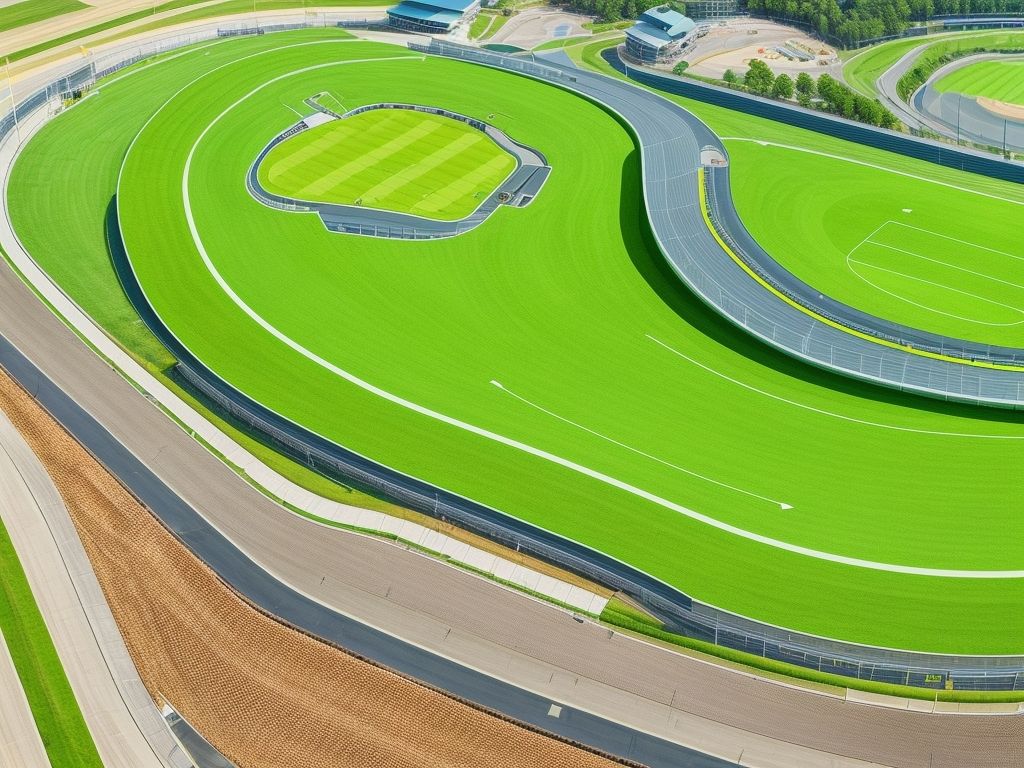
Photo Credits: Runningtrackresurfacing.Uk by David Martin
When it comes to track construction, there are several important factors to consider. Climate and weather conditions, as well as the intended use and sports requirements, play a crucial role in this process. Proper maintenance and upkeep are imperative for maintaining the longevity and quality of a sports surface. So, let’s explore these key aspects and consider the essential factors involved in creating top-notch tracks for athletes to conquer.
1. Climate and Weather Conditions
| 1. Climate and Weather Conditions |
| Climate and weather conditions |
When it comes to track construction, it is crucial to take into account the climate and weather conditions. These factors play a vital role in determining the performance and longevity of sports surfaces. Here are some important points to consider:
1. Temperature: Extreme temperatures can impact the durability of the track surface. High temperatures can cause the surface to expand, leading to cracks and unevenness. On the other hand, cold temperatures can make the surface more rigid, increasing the risk of injury. It is essential to select materials that can withstand the specific temperature range of the location.
2. Humidity: Humidity levels can affect the traction and grip of the track surface. High humidity can make the surface slippery, increasing the risk of accidents. Proper drainage systems should be in place to prevent water accumulation on the track during rainy or humid conditions.
3. Rainfall: The amount of rainfall in an area can influence the drainage requirements of the track. Excessive rainfall can lead to waterlogging and poor drainage, rendering the track unusable. Adequate drainage systems should be designed and installed to ensure efficient water management and prevent damage.
4. Wind: Strong winds can impact the performance of track events such as sprints and jumps. Wind direction and speed should be taken into consideration during the construction process to minimize their effects on athletes’ performance.
5. UV Exposure: Prolonged exposure to sunlight can deteriorate the track surface over time. It is important to choose materials that are resistant to UV radiation and implement proper maintenance practices to protect the surface from UV damage.
By considering these climate and weather conditions during track construction, it is possible to create a durable and safe sports surface that can withstand the challenges posed by different environmental factors.
2. Intended Use and Sports Requirements
Intended Use and Sports Requirements
| Column 1 | Column 2 |
| 1. Type of Sport | Football |
| 2. Surface Requirement | Artificial Turf |
| 3. Performance Level | Professional |
| 4. Safety Features | Shock absorption, Non-abrasive |
| 5. Durability Expectation | High traffic resistance |
In considering the intended use and sports requirements for Fox Sports Surfaces, several factors should be taken into account.
The type of sport being played is crucial. For example, if the sport is football, an artificial turf surface would be most suitable.
The surface requirement must match the specific needs of the sport. For instance, for football, an artificial turf that provides good traction and mimics the feel of natural grass would be necessary.
The performance level expected on the surface is another important consideration. If the surface is intended for professional use, it must meet the highest standards in terms of playability and ball response.
Safety features are also significant when selecting a sports surface. Shock absorption and a non-abrasive surface are essential for player safety, reducing the risk of injuries from falls or collisions.
The durability of the surface is crucial, especially for high-traffic areas. The sports surface should be able to withstand constant use without excessive wear and tear.
Considering these factors will ensure that the chosen sports surface meets the specific needs and requirements of the intended sport, providing a safe and high-quality playing surface for athletes.
3. Maintenance and Upkeep
Proper maintenance and upkeep are essential to ensure the longevity and performance of Fox Sports Surfaces. Here are some important factors to consider for maintenance and upkeep:
1. Regular cleaning: It is important to regularly clean the surface to remove dirt, debris, and other contaminants that can affect the track’s performance and safety. This can be done by sweeping, power washing, or using appropriate cleaning solutions.
2. Inspections: Conduct routine inspections to identify any signs of damage, wear, or potential issues. This includes checking for cracks, uneven surfaces, and any loose or damaged components. Promptly address any problems to prevent further damage.
3. Repairs and resurfacing: If any damages or issues are detected during inspections, it is important to schedule repairs or resurfacing as soon as possible. This may involve patching cracks, leveling uneven areas, or resurfacing the entire track if necessary.
4. Drainage maintenance: Ensure that the drainage system is functioning properly to prevent water pooling on the track surface, which can lead to slipperiness and deterioration. Clear any clogs or debris that may hinder proper drainage.
5. Regular maintenance schedule: Develop and follow a regular maintenance schedule that includes cleaning, inspections, and repairs as required. This will help prevent major problems and maintain the track’s optimal condition.
6. Climate consideration: Take into account the climate and weather conditions when maintaining and caring for the track. Extreme temperatures, heavy rainfall, or harsh sunlight can impact the track’s performance and durability. Adjust maintenance practices accordingly.
By following these maintenance and upkeep practices, you can ensure that your Fox Sports Surfaces track remains in top condition, providing enhanced performance and safety for athletes. Proper maintenance is crucial to get the most out of your investment and prolong the lifespan of the track.
Common Issues and Troubleshooting
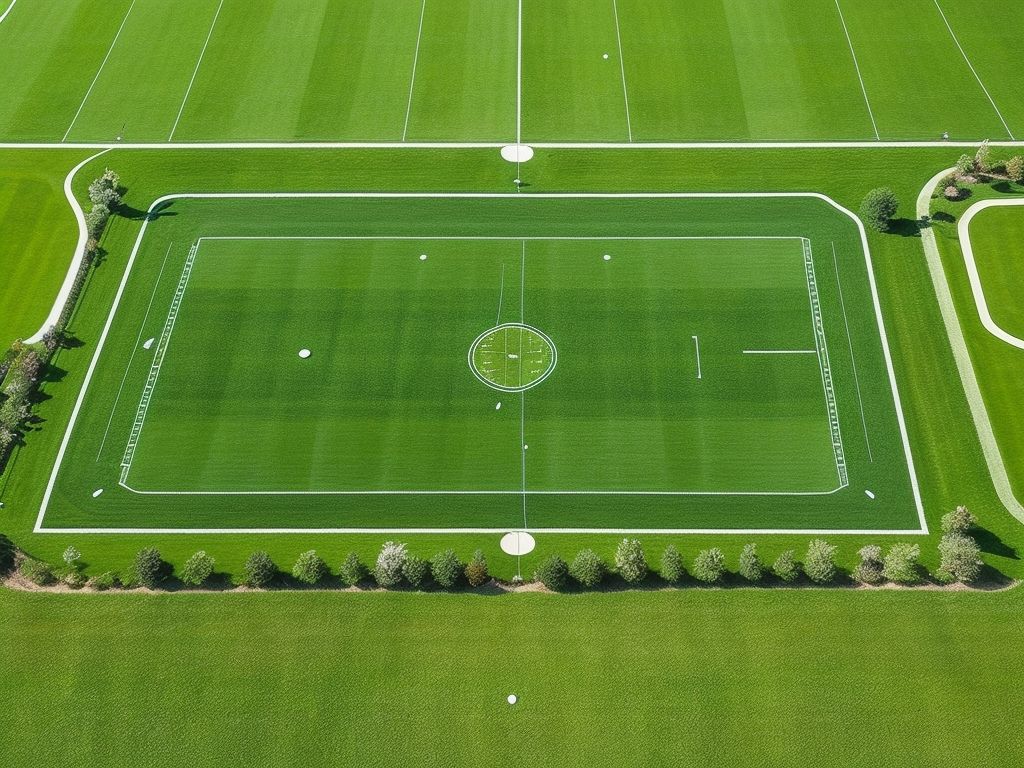
Photo Credits: Runningtrackresurfacing.Uk by Billy Perez
If you have ever experienced any issues with your fox sports surfaces, this section is dedicated to addressing common problems and providing troubleshooting solutions. We will explore sub-sections including cracks and damage, drainage issues, and the challenge of an uneven surface or bumps. Prepare yourself to discover useful tips and solutions for maintaining your fox sports surfaces in excellent condition. Say goodbye to headaches and hello to smooth playing fields and successful games!
1. Cracks and Damage
Cracks and damage in a track surface can have a significant impact on its performance and safety. These cracks can occur due to various factors, such as weather conditions, improper installation, or heavy usage. It is important to address these cracks promptly as they can worsen over time and lead to further damage. Regular inspection and maintenance are crucial to identify and repair cracks early on.
The severity of the cracks will determine the appropriate repair method, which may involve patching, filling, or resurfacing the affected areas. Properly repairing cracks is essential to prevent further damage and ensure the longevity of the track surface. Neglecting cracks can pose safety risks to athletes, increasing the likelihood of trips, slips, or injuries. Therefore, it is important to maintain a smooth and crack-free surface to maintain optimal performance and prevent accidents during sports activities.
Regularly cleaning and sweeping the track surface can help prevent debris from accumulating in cracks, reducing the chances of further damage. By incorporating crack repairs as needed and implementing proper maintenance, the track surface can remain durable and functional for an extended period of time.
2. Drainage Problems
Drainage Problems
- Pooling of water: One common drainage problem in track construction is the pooling of water on the surface. This can occur due to an improper slope or inadequate drainage systems. It is essential to ensure that the track is correctly sloped to allow water to flow off the surface.
- Poorly designed drainage systems: Another drainage problem is the presence of a poorly designed or malfunctioning drainage system. The system should be able to effectively channel water away from the track to prevent any accumulation or seepage.
- Inadequate maintenance: Neglecting regular maintenance activities such as clearing debris or fixing clogged drains can lead to drainage problems. Regular inspections and cleaning of drains are essential to ensure proper water discharge.
- Improper grading: Improper grading of the track can result in drainage issues. If the track is not levelled properly, water may accumulate in certain areas, leading to potential hazards and damage to the track surface.
- Surface erosion: Poor drainage can contribute to surface erosion, which can compromise the integrity and longevity of the track. Water that does not drain properly can seep into the track layers, causing erosion and weakening the structure.
To avoid these drainage problems, it is crucial to properly plan and design the drainage system during track construction. This includes ensuring the proper slope, installing effective drainage channels, and regularly maintaining and clearing the drainage system to prevent any blockages or malfunctions. By addressing these drainage issues, the track can function optimally and provide a safe and high-quality sports surface for athletes.
3. Uneven Surface or Bumps
Dealing with an uneven surface or bumps is a common issue in track construction. Here are some factors and solutions to consider:
- Identify the cause of the uneven surface or bumps. It could be due to poor base construction, improper compaction, or natural settling over time.
- Assess the severity of the issue. Determine if the unevenness or bumps are minor or if they pose a significant safety risk to athletes.
- Fixing minor uneven surfaces or bumps can be achieved by adding an additional layer of surfacing material on top. This will help level out the track and provide a smoother running surface.
- In more severe cases where the unevenness or bumps are significant, it may be necessary to remove the affected section of the track and redo the base construction and compaction process.
- Consider implementing proper maintenance and upkeep practices to prevent future issues with an uneven surface or bumps. Regular inspection and maintenance of the track can help identify and address problems before they become major concerns.
- It is essential to prioritise athlete safety. If the uneven surface or bumps cannot be adequately addressed, it may be necessary to close off the affected area until repairs can be made.
By addressing uneven surfaces or bumps promptly and thoroughly, track owners and operators can ensure that athletes can train and compete safely and effectively on the track surface.
Maintaining and Caring for Fox Sports Surfaces
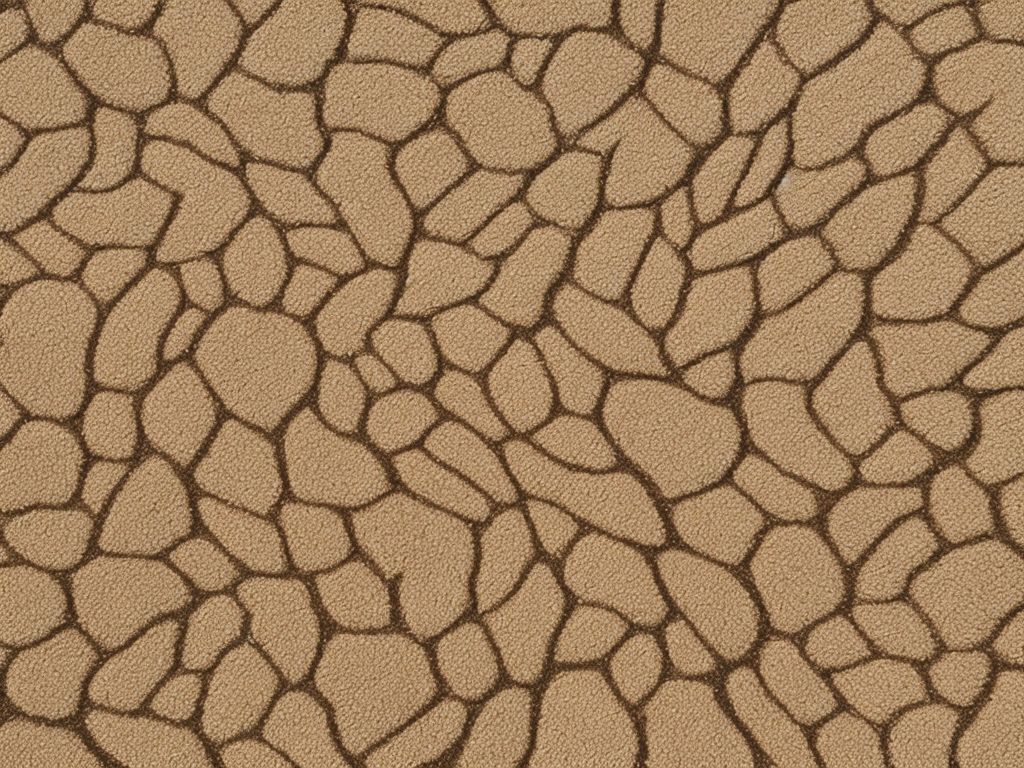
Photo Credits: Runningtrackresurfacing.Uk by Dylan Nelson
To ensure the longevity and performance of Fox Sports Surfaces, it is essential to follow proper maintenance and care guidelines. Here are some important factors to consider:
1. Regular cleaning: Clean the surface regularly using a mild detergent and water to remove dirt, debris, and stains. Avoid using harsh chemicals or abrasive materials that could damage the surface.
2. Preventive measures: Minimize wear and tear on the surface by using protective mats or covers in high-traffic areas or where equipment is frequently used. Encourage users to wear appropriate footwear to reduce the risk of damage.
3. Inspections: Regularly inspect the surface for any signs of damage, such as cracks, tears, or loose seams. Address any issues promptly to prevent further deterioration and ensure the safety of users.
4. Proper drainage: Ensure that the surface has adequate drainage to prevent water accumulation, which can lead to deterioration over time. Clear any debris or blockages from drainage systems to maintain optimal performance.
5. Temperature and climate considerations: Take into account the temperature and climate conditions when maintaining the surface. Extreme heat or cold can affect the integrity of the surface, so implement appropriate measures to protect it during harsh weather conditions.
6. Professional maintenance: Consider scheduling regular professional maintenance to deep clean and inspect the surface, ensuring it remains in optimal condition. Professional experts can also provide guidance on specific care requirements based on the type of surface.
Remember, maintaining and caring for Fox Sports Surfaces is crucial to maximize its lifespan and performance. By following these guidelines, you can ensure a safe and durable playing surface for athletes and sports enthusiasts alike.
Incorporate the keywords naturally: maintaining and caring for Fox Sports Surfaces.
(‘
Some Facts About Fox Sports Surfaces:
- ✅ Fox Sports Surfacing offers a range of services including sports surfacing, playgrounds, and projects for schools. (Source: Our Team)
- ✅ They have completed projects at Radley College in Oxfordshire, Ark Globe Academy in London, and Moorside School in Newcastle. (Source: Our Team)
- ✅ Fox Sports Surfacing has been installing sports surfaces since 1993 and prides themselves on their service, people, and efficiency. (Source: Our Team)
- ✅ Fox Sports Surfacing provides information, advice, and assistance in every stage of a sports project. (Source: Sapca.org.uk)
- ✅ They are the recognized trade association for the sports and play construction industry in the UK. (Source: Sapca.org.uk)
‘)
Frequently Asked Questions
1. Can Fox Sports Surfacing help with my sports facility project?
Yes, Fox Sports Surfacing is dedicated to providing information and guidance for all stages of sports facility projects. They have a team of qualified members who can assist you.
2. How can I contact Fox Sports Surfacing for more information?
You can easily get in touch with Fox Sports Surfacing by using the contact details provided on their website. They will be happy to answer any questions you may have and discuss your specific project.
3. Does Fox Sports Surfacing offer technical guidance?
Yes, Fox Sports Surfacing provides technical guidance for the installation of synthetic sports surfacing. They have years of experience in the field and can offer valuable advice to help you choose the right surface.
4. Are funding providers available for sports projects?
Yes, Fox Sports Surfacing can provide information on funding providers. They can assist you in finding the right funding options for your sports facility project.
5. Is Fox Sports Surfacing a registered trade association?
Yes, Fox Sports Surfacing is registered in England & Wales with registration number 05126820. They are the recognized trade association for the sports and play construction industry in the UK.
6. What are the benefits of choosing Fox Sports Surfacing for my project?
Fox Sports Surfacing has a qualified team, years of experience, and a strong focus on customer service. They are ready to help you build your vision and provide bespoke sports surfacing solutions for all ages to get active and have fun.
Other Suppliers
